North Carolina War Between the States Sesquicentennial
The Secession Movement in North Carolina
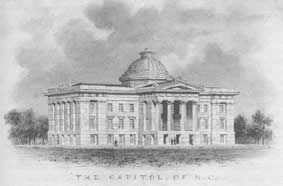
“In surveying the secession movement of the lower South, the evidence points to the
conclusion that it was not a conspiracy of a few leaders, but a genuinely popular movement.
It is true that minorities in Alabama, Georgia, Louisiana, and Texas were opposed to immediate secession.
Yet the Southern people had contemplated the probability of dissolving the Union for ten years,
and had debated the pros and cons in countless debates.
The wave of rejoicing throughout the lower South which followed the passage of the secession
ordinances indicated a deep popular approval. The common people of the South, except in
the mountain and hilly area which jutted into the South from Pennsylvania, agreed with the
aristocrats that the victory of the Republican party was a danger to Southern society
which must be met by secession.
The rise of this new [Confederate] nation was a part of that romantic nationalism of the
mid-nineteenth century which was agitating Europe. At last the dream of Southern nationality….
seemed to be realized – the romantic vision expressed by Langdon Cheves ten years earlier
at the Nashville Convention: “Unite and you shall form one of the most splendid
empires on which the sun ever shone.”
The secession of the lower South marks the end of a long period of sectional adjustment by the
fine art of compromise. The exercise of this art is indispensible in a democratic country like the
United States, containing regions with clashing economic interests and difficult race problems.
Traces of old sectional animosity have survived below the Potomac…..Today [1949] the South remains
the most self-conscious of American sections and for years to come is likely to preserve its deep
regional feeling. Such a state of feeling may be a powerful force for good, since it resists the
standardization of life in America. The true function of this regionalism is to preserve
the rich variety of life in the United States, which is so stimulating to
the development of literature, art, and intellectual activity.”
(The History of the Old South, Clement Eaton, MacMillan Company, 1949, pp. 591-592)
Being then a popular movement for separation from the Union of 1787, as was the separation
from the earlier Articles of Confederation, it underscores that this 1861 conflict was not a "civil war"
for control of one government, but a war of independence on the part of several States no different than
thirteen colonies seeking independence from England. How then would we term this observance
the North Carolina Civil War Sesequicentennial?
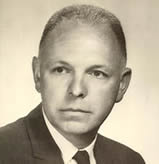
The Secession Movement in North Carolina, J. Carlyle Sitterson
In the interest of providing a scholarly, well-researched and detached assessment of
the secession movement, as well as Union spirit, in ante-bellum North Carolina, we turn to
Dr. Joseph Carlyle “Lyle” Sitterson’s seminal work on the sources and development of secessionist
thought in North Carolina, from the Revolution through the 1850’s and the eve of the
War Between the States, published under the direction of the Departments of History and
Political Science of the University of North Carolina in 1939, and part of the
James Sprunt Studies in History and Political Science, Volume 23, Number 2.
Born in 1911 and a Kinston native, Professor Sitterson joined the history faculty of the
University of North Carolina in 1935, rose to Dean of the School of Arts & Sciences, and
became Chancellor of UNC in 1966. He passed away 19 May 1995.
Overview -- Social and Economic Development of North Carolina
“The secession movement in North Carolina was characterized by certain features which gave
it a more than local significance. Within the State were found both the forces which impelled
the South to leave the Union and those who resisted until secession became an accomplished fact.
The presence of many influential individuals and groups intensely opposed to secession provides
an excellent opportunity to study and appraise the principal forces which were indifferent or
hostile to the movement for a Southern confederacy.
On the other hand, the existence of a body of opinion sincerely convinced of the desirability
of a Southern confederacy makes it possible to estimate the positive forces striving for Southern
nationalism. A thorough study of the secession movement in North Carolina requires an analysis of the
socio-economic sectionalism of the State. Particular social and economic conditions provided
the setting in which the Southern Rights movement was born and furnished much of the
food upon which it was nurtured. Likewise, social and economic conditions furnished the
basis for opposition to States’ rights and secession opinion.
Although North Carolina was not one of the largest slaveholding States, advantageous
geographical conditions planted the plantation-slavery economy firmly on the coastal plain.
As early as 1790 in only three eastern counties did slaves form less than twenty per cent
of the total population. In 1840 slaves formed 42 per cent of the population of the section.
From 1840 to 1860 the slave population of the East increased 35.4 per cent as compared
with only 26.4 per cent increase in the white population.
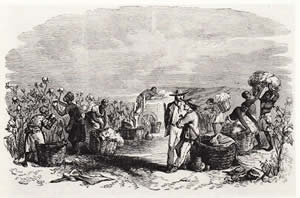
In 1860 slaves composed 44.2 per cent of the total population of the section, whereas the
percentage for the entire State was 33.5 per cent. Approximately 14.4 per cent of the
slaveholders owned more than twenty slaves each [42.2 percent of slaveholders owned 5 or less slaves].
The majority of the white inhabitants of the East were not slaveholders, but small farmers who
raised wheat and corn and perhaps some cotton and tobacco. For labor they depended upon
their families and an occasional hired hand. On the sounds and inlets many engaged in fishing.
Also there were merchants, mechanics, and many members of the professional classes.
Although the East like the remainder of the state was primarily rural and agricultural, its
commercial and industrial development was of some importance. It contained the largest
towns and commercial centers in the State, Wilmington, Fayetteville, New Bern and Raleigh.
Its banking resources were greater than those of the remainder of the State, twenty
of the State’s thirty-six banks being located in that section.
(Sitterson, pp. 1, 5-6, 7-8)
State’s Rights and Federalist Strongholds”
“The political characteristics of the coastal plain, as well as its socio-economic features, served
to accentuate the distinctiveness of the section. As the end of the ante-bellum period
approached the coastal plain became increasingly the stronghold of the conservative
Democratic party. Indeed, long years of struggle in State politics to maintain the status quo
against a rapidly growing liberal western section which demanded reform in representation and
more liberal expenditures for internal improvements was of considerable importance in strengthening
the States’ rights philosophy in the East.
Opposition to increased expenditures, protective tariffs, and anti-slavery views in national
politics accorded with the position of the coastal plain on State issues.
In political, as well as socio-economic factors, the northeast differed decidedly from the
middle coastal plain region. It was a commercial, area interested in federal aid to commerce
and especially toward opening an inlet to Albemarle Sound in the vicinity of Nag’s Head.
Desirous of positive legislation by the federal government….it was a center of Federalist
strength in North Carolina as long as that party existed and for the remainder of the
ante-bellum period was the stronghold of the Whig party in the East.
The piedmont was not so clearly differentiated from the entire State as either the East or the mountains.
Indeed, its socio-economic system mirrored the chief features of both coastal plain and mountain region.
Although tobacco and cotton were important crops in a few counties, the plantation-slavery system
was not dominant in the economy of the piedmont….[and] a region of small farms on which
grain and livestock were its principal products. The number of those who lived on the verge of
poverty and want was undoubtedly smaller than in the remainder of the State.
The fifteen counties of the mountain area in 1860 formed the least populous and least developed
area of the State, having an aggregate population of about 119,257 [of which 10.2 per cent were slaves].
(Sitterson, pp. 9-11, 13-14, 18)
Conclusion:
“The plantation-slavery regime was firmly established in the coastal plain in the ante-bellum period.
Rapidly becoming a minority section in the State in the ante-bellum period, the coastal plain was
thoroughly versed in a political philosophy and program of limited governmental action. When as a
part of the plantation-slavery region of the South it realized that the South was becoming a minority
section in the Union, it was not difficult to make the transfer of defense of a politico-economic
regime from the arena of the State to that of national affairs.
The traditional opposition of an agrarian section to increased governmental powers was strengthened
by a determined defense of its own peculiar civilization which it conceived as being attacked.
The socio-economic characteristics of the piedmont and mountains, on the other hand, made
it inevitable that they should regard the anti-slavery movement with less foreboding. Moreover,
there were elements in the life of the western area which were positively opposed to slavery.
The persistent opposition of the Quakers in the piedmont to the institution was of considerable
importance in maintaining for many years in that area more freedom of opinion on the subject.
Likewise, it acted as a deterrent to an enthusiastic adherence to the secession movement
as it gained strength in the State during the fifties. In addition to this religious opposition there
were important economic factors which produced among the yeomanry indifference and even
opposition to the slave system. Members of the artisan class thought that the
slave robbed the freeman of his wages.
It was to be expected that small landowners of the up-country, who had for generations struggled
against the dominance of the coastal plain in State affairs, would view with suspicion a Southern
Rights movement whose main strength lay in the plantation-slavery region. Many non-slaveholders
were apt to think that Southern rights meant primarily the rights of the slaveholder.”
(Sitterson, pp. 21-22)
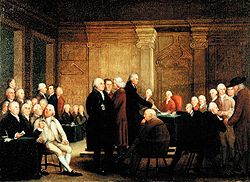
Post-Revolution North Carolina:
“North Carolina emerged from the Revolution imbued with a strong particularistic spirit. Emphasis
upon and interest in State matters absorbed the energies of political leaders. The result was that
the State took little interest in the affairs of the Confederation.
When the Congress invited the States to send delegates to Philadelphia in 1787 for the purpose of
revising the Article of Confederation, the General Assembly appointed a delegation of five to represent
the State. The North Carolina delegation represented the views of the conservative minority in the State
which desired a strong central government….[but it] was not representative of the views of the majority
of North Carolinians who were apparently well-satisfied with the government provided by the Articles.
It is not to be supposed that the North Carolina delegates, though they desired a stronger Union,
favored a genuine national government rather than a confederation of States. Although they favored
strengthening the powers of the central government, they did not intend that North Carolina should
lose her sovereignty as a State.
Upon completion of the new Constitution, provision was made for its ratification by conventions
in the States. The anti-federalists, led by Willie Jones in the northeast, Timothy Bloodworth in
the southeast, Judge Samuel Spencer, Joseph McDowell and Thomas Person in the central
and western counties, campaigned vigorously.
They denounced the federal judiciary, declared that the poor would be burdened with taxation,
pointed to the lack of provisions guaranteeing the rights of individuals, and criticized the failure to
protect the rights of the States. Public opinion crystallized on the issue of ratification. The anti-federalists
were successful and elected a large majority of delegates to the convention. The farmers of
North Carolina looked upon the Constitution as an instrument designed to aid the commercial interests.
In the debate over the clause making the Constitution, the laws of the United States, and all treaties
made under the authority of the United States the supreme law of the land, Timothy Bloodworth….
declared that the new Constitution “would sweep off all the constitutions of the States,” would be
“a total repeal of every act and constitution of the States,” and would produce “an abolition of State governments.”
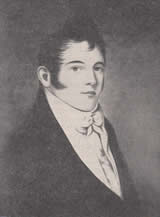
Richard Dobbs Spaight
On this point the Federalist leaders adhered to sound State sovereignty doctrine, holding in general
that the new Constitution was a compact between the States. Both William R. Davie and
Richard Dobbs Spaight, members of the Philadelphia convention, declared that the new government
intended a stronger Union without destroying the sovereignty of the States.”
(Sitterson, pp. 23-25)
“Both Federalist and anti-Federalist leaders in the State were strict constructionists in the early
[seventeen] nineties. James Iredell, Federalist justice of the United States Supreme Court, in
February, 1794, in his dissenting opinion in the case of Chisholm vs. Georgia, clearly
enunciated the States’ rights theory of government. His statement was completely agreeable
to the rising States’ rights Republican party and remained a cardinal principle in Southern
political thought until the Civil War. Iredell held to the theory of divided sovereignty, claiming
that in all matters except those specifically delegated to the federal government
the States remained sovereign.”
(Sitterson, pp. 26-27)
South Carolina’s Nullification Crisis:
“The sectional controversy over the protective tariff which had become bitter in the late twenties
was climaxed in 1832-33 by the South Carolina nullification movement. The North Carolina
legislature of 1827 adopted a resolution opposing the protective tariff.
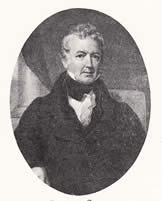
William Gaston, a strong Federalist and ardent lover of the Union, was greatly alarmed at the
threat to the Union from sectional controversies. In 1833, he wrote his son-in-law in the following prophetic vein:
“There has been for several years, and there is now, a settled design among some of the
leading bold and artful politicians on this side of the Potomac to establish a separate Southern Confederacy.
Of this there is no doubt. The Tariff and Nullification were seized on as means for this end. These have failed –
but the design has not been abandoned.”
Although [Andrew] Jackson’s proclamation [against nullification] probably received the approval of the
majority in the State, leading States’ rights men made no secret of their opposition. The venerable
Nathaniel Macon pronounced the proclamation as bad as nullification. He declared himself
opposed to nullification, but expressed his firm belief in the right of secession which he considered
“the best guard to public liberty and to public justice that could be desired.
[Andrew Jackson’s] force bill, which provided for military aid if necessary for collecting the
revenue of the United States, was generally condemned by North Carolinians. According
to Representative Samuel P. Carson [of McDowell County], it “empowered [the executive]
to ride rough-shod over the sovereignty of a State.” While the State unquestionably disapproved
of nullification, it is not to be assumed that this implied a repudiation of States’ rights. On the
contrary, the faith of the majority in this doctrine was not materially weakened by nullification.
Moreover, it is probably that [Jackson’s] force bill served to increase
their sensitiveness on the issue of States’ rights.”
(Sitterson, pp. 31-33)
African Slavery in North Carolina:
“The subject of slavery received little public consideration in the State after the Missouri controversy
until the rise of the abolition movement. The answer of the South to the [violent slave insurrection]
threats of the abolitionists was a more rigid control of the slave population.
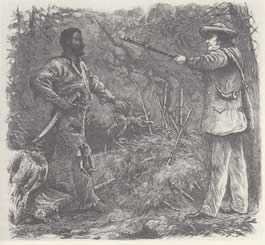
No sooner had North Carolina made these provisions for controlling her Negro population than
the Nat Turner insurrection occurred [in 1831] just across the border in Southampton County, Virginia.
The plot apparently extended into North Carolina and the neighboring country was soon wild with
excitement. Rumors of slave uprisings spread in every direction. Wilmington armed itself in defense
of a supposed attack [and] Raleigh, likewise, made ready to defend itself, and Hillsboro organized
a company of militia to send to the defense of the capital.
Fearful of slave uprisings and believing that the activity of the Northern abolitionists was calculated
to lead to dissatisfaction among the Negroes, the people of the South determined to make it clear
their position on incendiary literature, the right of a State to control its own affairs,
and the entire subject of slavery.
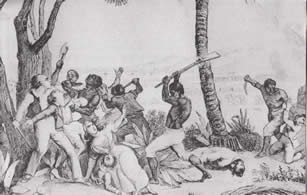
Harsh Reality of Slave Revolt
The North Carolina legislature of 1835 passed a series of strong States’ rights and pro-slavery
resolutions. These resolutions received the support of both Whigs and Democrats and
undoubtedly represented the views of a large majority of the population. Representative
Kenneth Rayner….warned that continued sectional hostility would lead to bloodshed. In 1840,
Democrats of Richmond County adopted a resolution that they would support no man for the
presidency “who does not give the South satisfactory assurances, that he is opposed to the
wild and mischievous movements of the abolitionists.”
Already, the abolition agitation in the North was making
Southerners distrustful of Northern political leaders."
(Sitterson, pp. 33-36)
“As anti-slavery sentiment in the North became more manifest, and as other slave States became
concerned, a few individuals in North Carolina began to speak out in opposition to what many
Southerners considered a movement against the rights of the South.
A correspondent in the North Carolina Standard (Democratic) declared that before the South would
submit to the “flagrant injustice” of the Wilmot Proviso it would “encounter the dread alternative
of disunion, and if forced upon it, civil war.” An editorial in the Standard pronounced the Proviso
both “treacherous” and “dangerous” and declared that if it were adopted “the Union will be
destroyed as sure as God lives in Heaven!”
A few months later W.W. Holden, editor of this journal, warned the North that there was a point
beyond which the people of the South “will not be driven, and at which, come weal or woe,
they will take their final stand.”
Democratic meetings in the……counties of Lenoir, Wayne, Wake, Warren, Craven, New Hanover,
Franklin, Nash, Onslow, and Northampton condemned in no uncertain terms the principle
embodied in the Wilmot Proviso. The Democrats of Warren…..denounced the Proviso as
“an arrogant assumption of power – an audacious outrage upon Southern Rights and destructive
of the ends of our glorious Union – and, come what may, cannot, and will not, be submitted to.”
(Sitterson, pp. 39-40
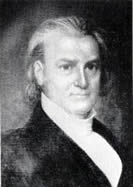
Mid-Nineteenth Century:
“Governor [Charles] Manly’s message to the legislature in November, 1850, expressed clearly the attitude
of the State toward the sectional disturbances. He declared that North Carolina rejoiced “at the
amicable settlement [Compromise of 1850] of this distracting controversy,” but let it be known
that North Carolina’s “deep and abiding devotion” to the Union would not make it insensible
to its rights, which rights it would never surrender.
Before the legislature convened in November, it had been urged to express “boldly and fearlessly”
the rights of the State. The legislature had no sooner convened than William B. Shepard of
Pasquotank [county] introduced in the Senate, November 23, a series of strong pro-Southern
resolutions which declared:
1. The Constitution of the United States is a compromise of conflicting interests and when
it fails to secure the objects for which it was created it “becomes the creature of the whim
and caprice of a dominant majority”;
2. “That although we love the Union of the States….we nevertheless regard the right to
secede from it as a right….which the people of North Carolina have never surrendered….
and that whenever a majority of the people of North Carolina shall solemnly resolve that they
cannot safely remain in the Union,….it is their duty to secede, and to punish such of her
citizens as refuse submission ot her will as rebels and traitors”;
3. Secession is an extreme remedy not to be resorted to unless all means of preserving
the Union have been exhausted;…..
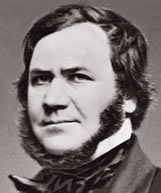
Shephard made a forceful speech in support of his resolutions in which he
upheld the doctrine of State sovereignty. On November 27, John A, Gilmer, a conservative Whig
of Guilford County, introduced in the Senate a series of resolutions more moderate than those
of Shepard [which included]….the people of North Carolina cherish the Union and would consent
to its dissolution only upon “extreme necessity” [and] whenever actual necessity demanded,
North Carolina would resort to extra-constitutional means and protect
its rights and honor “out of the Union.”
(Sitterson, pp. 74-75
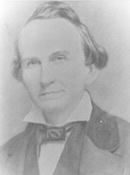
“The Inaugural Address of Governor [David S.] Reid, January 1, 1851, gave encouragement to the
pro-Southern faction in the legislature. He spoke out plainly and firmly on the slavery question,
charging the abolitionists and fanatics of the North with producing the crisis in national affairs.
“A solemn sense of public duty,” he said, “impels me to declare, that the encroachments of
the North on the domestic institutions of the South, have already
proceeded to the farthest allowable point.”
In view of the circumstances, he recommended that the legislature provide for taking the
steps necessary to maintain the Constitution of the United States and the rights of the
State in case the contingency should arise.”
On December 20, 1850, William S. Ashe, Democratic member of Congress from the New Hanover
[county] district, urged Thomas McDowell, Democratic member of the house of Commons from Bladen
[county], to make every effort to get the legislature to take a firm and decided hand. “Resolutions are
empty and idle,” he wrote, “unless they avow and establish a principle. Politicians may twaddle as
much as they like but unless some resource for protection is acknowledged to assist….
the sovereign States to shield themselves from wanton violations of the Federal compact,
the destiny of the South is made up and sealed. That resource is the right of secession.”
Throughout 1850-1851, the Democratic press maintained the right of secession. The Standard insisted
that just as no State could have been forced into the Union, likewise no State could be prevented
from going out. Other Democratic newspapers, notably the Goldsboro Republican and Patriot, the
Lincoln Courier, and the Wilmington Journal, also upheld the right of secession even though
opposed to its exercise at the time.
Among the Whig press, the Wilmington Commercial was most vocal in support of the doctrine.
It repeatedly declared the right of secession “the best means of preserving the Union, and the
only means of preventing a civil war,” since the rights of the South could not be left to Congress.
It was the view of the Milton Chronicle (Whig) that “the States came into the Union by a
voluntary act, and….by a voluntary act they can go out of it.”
(Sitterson, p. 78-81)
Secession Spirit Growing:
“In the congressional campaign of 1851, the Compromise of 1850 and the doctrine of secession
were thoroughly discussed. The strategy of the Whig press during the campaign was to declare
the issue to be that of Union or disunion and to charge the Democrats with designs to bring about secession.
The Raleigh Register [charged the Democrats with] “…a nefarious plot to chain our State to the
car of Disunion….Union and Disunion that is virtually now and will soon be the issue here!”
The remainder of the Whig press echoed this charge and called on the people to repudiate the
advocates of disunion. The Asheville Messenger….held that the “Federal Government has the power
to coerce a sovereign State, or half a dozen Southern States!”
Replying to such charges, the North Carolina standard denied that the Democrats were agitators
or disunionists, and asserted, on the contrary, that they were defenders of Southern Rights and
the Union. “The cause for secession, at this time, is not sufficient,” wrote the Standard.
The Wilmington Journal alleged that the Whigs were misrepresenting the advocates of the
right of secession in calling them disunionists. In the months preceding the election, Democratic
meetings in several counties had expressed themselves as in favor of “the right of the people of
a sovereign State to secede and peaceably withdraw from the Union.”
On the face of the [Whig victory] results throughout the State, it would certainly appear that the
people of North Carolina were opposed to disunion and undoubtedly were. The Raleigh Star (Whig)
was probably correct in attributing the result of the election to the strength of the Whig party and not
to the state of public opinion on the issues growing out of the contest between the North and the
South. All the candidates, it pointed out, had been in favor of the Union “as it is” and upon that
subject the members of both parties were in agreement.
(Sitterson, pp. 85-93)
The Consequences of Abolition:
“When the anti-slavery movement gained momentum in the [eighteen-] fifties, the slaveholding areas
of the South feared lest the interests of the agricultural slaveholding South be destroyed. Speaking
in the North Carolina Senate, November 27, 1850, William B. Shepard, Whig of Pasquotank, argued
that the “walling-in” policy of the federal government would mean ruination for North Carolina.
In support of his argument, he said that the amount of land in North Carolina available for slave labor
on a profitable basis was limited; such being the case, the natural increase in the slave population
would result in a rise in land value and a fall in the value of slaves. [Non-slaveholders] would find
land values beyond their reach and consequently would leave the State. The slaveholders would
be compelled to purchase land to employ and feed their surplus labor “until the State becomes one
vast plantation, barely producing enough to sustain, in the cheapest and scantiest manner,
her teeming black population.”
Henry Miller, Whig of Wake [County], made this argument [4 August 1858] the main basis of his
opposition to the Republican party. The policy of that party, he declared, was not to admit more
slave States, thereby hemming in slavery. The natural increase of slaves….made it necessary
that the slave area be extended or the South would be ruined. The policy of the Republican party,
if attained, would inevitably mean “the ruin of the South or the dissolution of the Union.”
The consequences of the abolition of slavery, declared the [21 February 1861] Wilmington Journal,
would be the lowering of the white men of the South to the level of the Negro, since the Negro from his nature
could not rise to the level of the whites.
“Do you desire the millions of Negro population in the South, to be set free among us, to stalk abroad
in the land, following the dictates of their own natural instincts, committing depredations, rapine
and murder upon the whites?” the Salisbury Banner asked its readers. The South’s concern for the
safety of white civilization at the hands of the uncivilized blacks was manifest on the occasion
of actual or threatened slave insurrections.
The non-slaveholding whites of the other areas seldom came into contact with the Negro. Knowing
little about the Negro or slavery in practice, they did not feel the threat of the uncivilized blacks to
their society to the same degree that the whites of the black belts did. The necessity for slavery
as a guarantee of white supremacy and civilization was not often expressed by the people of
North Carolina in defense of the institution.
Nevertheless, they were always conscious of the function of slavery for the control of the blacks.
In the fifties, “Southern rights” had become had come to mean racial security [in the face of abolitionists
fomenting slave insurrections], self-determination by the whites, whether in or out of the Union,
and all things ancillary to the assured possession of these.”
(Sitterson, pp. 100-102, 105-106)
Protective Tariff Controversies:
“One of the sorest spots in the relations between North and South in the ante-bellum period was
the protective tariff. Predominantly agricultural, the South had by 1850 become unalterably opposed
to the principle of [tariff] protection [for Northern industries]. North Carolina was in accord with the
rest of the South in its opposition to high tariffs. Both Whig and Democratic members of Congress
from North Carolina opposed the protective tariff as injurious to the interests of the State.
In 1850 the House of Commons adopted resolutions introduced by a Whig member declaring that:
1. The attacks of the people of the North upon the institutions of the South absolved North Carolina from
further obligation to the manufacturers of the non-slaveholding States by a tariff.
2. If North Carolina industries needed protection, it could be “better effected by State than by
Congressional Legislation [and] The North Carolina members of Congress should
oppose any increase in tariff rates.
Already the North Carolina members of Congress had aided other Southern members in defeating
attempts made in 1850 to increase the import duties in the interest, chiefly, of the Pennsylvania iron
industry. The Raleigh Register (Whig) expressed succinctly the attitude of North Carolina toward protection
when it wrote: “Who will rally under the banner of a protective Tariff, to enrich the abolitionists of the
North and East? We would like to see the Southern man who will?”
(Sitterson, pp. 106-107
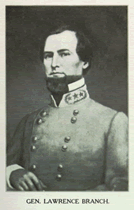
“In 1860, L. O’B. Branch, Democratic representative from North Carolina, was one of the
chief opponents of the Morrill Tariff, declaring it to be a purely sectional measure that would have
an ill effect upon the disturbed state of the Union. Advocates of secession in 1861 said that the
Morrill Tariff and the Pacific Railroad Bill would cost so much that the Union
was no longer desirable for the South.
The public lands were another issue on which the two sections held different views. Southern
Democrats took the position that the proceeds from the sale of public lands should not be distributed
among the States but should be used to lower the public debt, and thereby to make possible a
reduction in the tariff duties. The view was frequently expressed that the Union gave unequal
advantages to the sections because of the inequitable revenue system under which the South
paid more than her just part of the federal treasury.

[North Carolina Representative Burton Craige]…..said [on 21 May 1853] that any other use
of the proceeds….then as a correction of this inequitable revenue system would make “an inroad
upon the constitution, fatal to its integrity – fatal to the sovereignty of the States – fatal to the peace
and security of the South, and fatal, sooner or later, to the existence of the Union itself.”
[Craige continued] “If the funds raised from customs [tariff duties] be allowed to be invested in public l
ands that they be distributed among the States, the next step will be that customs will be raised
for the express purpose of a like distribution; under which system the South pays almost the whole
of the customs, will be brought under a grinding and inexorable tribute to the North.”
(Sitterson, pp. 107-108)
“Both Whigs and Democrats in the State identified themselves with the Southern hostility to the
homestead movement. Moreover, the realization that the immigrants made the representation of the
north in Congress larger by its increasing population and by forming free [labor] States from the western
territories constituted one of the chief bases of the strength of the Know-Nothing party in the South.
The North Carolina Standard declared [April 22, 1857] that should the Homestead Bill become law the
people of the free States “would pour their thousands into the territories where the South sent
hundreds; and out of the strife engendered, and the blood shed, and the bitter hates made still
more bitter, would rise State after State of Yankee growth, to take their places in the Senate –
to vote us down on every question affecting our vital interests, and finally control the government
absolutely and reduce us either to subjection or force us into the horrors of a general civil war.”
Sitterson, p. 109)
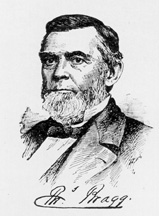
Secession Threatened:
“Governor Thomas Bragg, in his inaugural address in January, 1855, showed such hesitancy as had
the legislature on the question of Southern Rights. He spoke as follows: “We cannot shut our eyes,
and ought not if we could, to the spectacle which has lately been presented in the non-slaveholding
States of this Union, and to the efforts which have been made….to array section against section
and people against people….The day may come….when our Northern brethren will discover that
the Southern States intend to be equals in the Union, or independent out of it!”
(Sitterson, p. 131)
“The election of [James] Buchanan and the defeat of the “black republican” candidate [John Fremont]
was received with rejoicing in the State. “Great but unknown dangers” have passed,” proclaimed the
North Carolina Standard, “and the Union, for the present at least, is safe.” However, mixed with the joy
was the note of apprehension for the future. Political leaders could not overlook the tremendous
vote polled in the North by the Republican party.
Weldon N. Edwards, time-honored leader of the Democracy in North Carolina, wrote significantly:
“I look with fearful apprehensions to the struggle four years hence – there will be much more of tumult
and peril in it than that which we have just passed.” A North Carolinian, writing from New York,
advised “only let it be understood at home that the agitation here [in the North] is not going to cease,
nor is the evil crushed to death by Mr. Buchanan’s election.”
(Sitterson, p. 138)
“In his inaugural address, January 1, 1859, Governor John W. Ellis made no threats of secession;
yet he showed himself to be aware of the aggressions upon the institutions of his section.
“We are not prepared,” he said, “for the acknowledgement that we cannot enjoy all our constitutional
rights in the Union. Should that day unfortunately come, but little doubt need be entertained that our
people will act as best comports with their interests and honor and with the sacred memories of
the past, to whatever the result may lead.”
(Sitterson, p. 144)
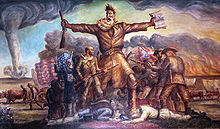
A North Carolina Independent of the North:
“John Brown’s raid in October, 1859, gave a decided impetus to the feeling in the South that
non-intercourse and complete economic independence of the North was necessary to the
maintenance of Southern Rights and to the preservation of Southern civilization.
Citizens of the State were encouraged to use no Northern products and to refrain from spending
money “in pleasure travel and luxurious living at the North.” “Let us then commence a peaceful
battle with the North,” urged the Raleigh Register, “and persevere in it until we achieve the
conquest of our freedom from our present unwise, dangerous and degrading dependence on her.”
The Democrats of Franklin County recommended “a determined and settled system of non-intercourse
with the North” as one of the best means of securing respect for Southern Rights. Southern importers,
capitalizing on the hostility toward the North, appealed to the merchants of the South for business
with the statement that “All of us hold sentiments in common….and of us desire…..to become
commercially independent of the North.”
(Sitterson, pp. 115-116)
“Northern periodicals containing anti-slavery articles likewise aroused tremendous resentment
among the people of the South. In 1854, both Harper’s and Putnam’s magazines were severely
denounced by the North Carolina press for arraying themselves against the South. The Edenton
Whig charged that these periodicals had “deliberately thrown themselves into the tide of
excitement now setting against us, and prostituted themselves to the disreputable task of giving
such a direction to its current as they hope may eventuate in the complete
destruction of our peculiar institution.
The following year the North Carolina Standard pronounced Putnam’s Magazine “only fit to be read
by the putrid masses of Northern fanatics, traitors, and political desperadoes.” As for Harper’s Magazine,
the Standard would have been pleased to see it “banished.” In the place of Northern periodicals, the
circulation of Southern magazines was encouraged as “the most effectual way of reaching the masses
and inculcating sound views and unity of action in regard to Southern institutions.” Likewise, textbooks
containing sentiments inimical to the institutions of the South were frowned upon and
in some cases excluded from the schools.”
(Sitterson, pp. 118-119)
A Separate Confederacy?
“In March [1860], Henry K. Burgwyn of Northampton [county] discussed the problem of a Southern
confederacy in a long letter which appeared in the Raleigh Standard. With striking foresight, he pointed
out that a confederacy could be set up by means of a convention which would meet following the
election of a Black Republican in November and a new nation would be underway
before his inauguration in March, 1861.
Should the North attempt to “whip the South back into the Union,” it was foredoomed to failure
because it would be unable to secure enough money to equip and maintain an army sufficient
for such an undertaking. It was more probable, in his opinion, that the two confederacies
would live peacefully side by side since the North was so
dependent on the South for its prosperity.” (Sitterson, p. 160)
“Upon the events of 1859-1860 must be placed the responsibility for immeasurably increasing
secession sentiment in North Carolina. Prior to John Brown’s raid the masses of the people
had never seriously considered the possibility of secession in practice. John Brown’s raid, the
[sectional animosities] of the Thirty-sixth Congress, the disclosures of abolitionist activities
in the State, and the apparent open hostility of the Northern people toward the South created an
uneasiness which was never entirely dispelled during the following year.
Substantial non-political leaders were for the first time shown the practical results of abolition activity.
In consequence, thousands of potential secessionists were created. It was, thus, in an
atmosphere conducive neither to moderation nor to compromise
that the presidential contest of 1860 occurred.
(Sitterson, p. 161)

“[The] State Democratic Convention….met in Raleigh, March 8. Governor [John W.] Ellis, in a
ddressing the convention, bitterly denounced the abolitionists and the leaders of the Republican party,
likening them to murderers and assassins. “The abolition of slavery here at home is the design
of our opponents,” he warned the convention. [Resolutions] asserted that the people of North Carolina
would resist aggressions upon their rights “whenever the emergency arises”; and finally, they declared
that the triumph of the Black Republican party “would be followed by continued bloody raids….upon all
the Southern border States; that such collisions would destroy that fraternal feeling between
the sections, without which the Union cannot endure.”
(Sitterson, pp. 161-162)
“The Constitution Union party, composed largely of former Whigs, made its campaign on the issue
of Union or disunion. The Whig press maintained throughout the campaign that [Vice President John]
Breckinridge was the candidate of the disunionists….[and promoted the candidacy of] Bell and Everett.
The Breckinridge Democrats….defended the Breckinridge party as the upholder of the rights of the South
and condemned those who would “preserve the Union at the sacrifice of [the] Constitution,
and the rights of the States.”
In the closing weeks of the campaign when the hope of defeating Lincoln [by joining the Douglas and
Breckinridge campaigns] began to grow dim, a feeling of impending disaster began to pervade all
classes of the population. In some sections apprehension of a slave uprising appeared and great
excitement prevailed for several days.
After the results of the October elections in Pennsylvania, Ohio and Indiana came known,
the election of Lincoln appeared almost certain. Consequently, considerable attention was given to
the policy for North Carolina to adopt after his election. Since 1856 there had been frequent threats by
Democrats that the election of a Republican would lead to a dissolution of the Union.
When asked in October whether it would favor secession in the event of Lincoln’s election, the
Wilmington Journal replied: “It is not simply a slab-sided, rail-splitting Illinois politician that
we look at – it is the system he represents…..We speak only of ourselves when we say that
we think the perils surrounding submission are greater than
those attendant upon the opposite course.”
(Sitterson, pp. 170-172)
“The North Carolina Standard, for over a decade leader of the Democratic press, repeatedly stated
during September and October, that the mere election of a Republican president would not at
that time “be sufficient cause for dissolving the Union.” However, should some of the Southern States
secede, the Standard declared that it would oppose any attempt to coerce them back into the
union even to the point of forceful resistance.
R.S. Patterson, a prominent Democrat of Forsyth [county], wrote that he was unwilling to see
the country ruined because of the election of a Black Republican and favored submitting to his
election until a deliberate violation of the rights of the South occurred. Such, he declared to
be the sentiment of the people of Forsyth.”

George E. Badger
Most emphatic of all in their opposition to secession in the event of Lincoln’s election were
the Whigs. In an effort to solidify Union sentiment and to forestall any precipitate action in the
event of Lincoln’s election, the Constitutional Union party held several large Union meetings in
various parts of the State. The largest of these was in Salisbury [with addresses by]
George E. Badger, Alfred Dockery, William A. Graham, O.P. Meares, John M. Morehead…
and Zebulon B. Vance. “But one sentiment prevailed,” wrote a contemporary, “and that was,
we will fight for the Constitution, the Union, and the laws, within the Union and the laws.”
(Sitterson, pp. 173-174)
“Governor Ellis correctly described the attitude of North Carolina toward the election in a long letter
to Governor Gist of South Carolina. The people of his State, he wrote, were far from agreeing as to what
should be done in the event of Lincoln’s election. “Upon the whole,” he wrote, “I am decidedly of [the]
opinion that a majority of our people would not consider….[his election] as sufficient ground
for dissolving the Union of the States.”
Breckinridge carried the State by the small majority of 848, receiving 48,539 to 44,990 for Bell
and 2701 for Douglas. Douglas failed to carry a single county.”
(Sitterson, p. 175)
Copyright 2013, The North Carolina Sesquicentennial Commission